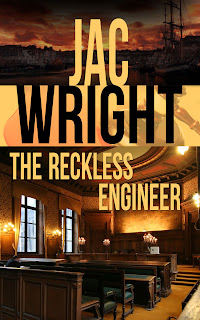Jeremy clutched his steering wheel in anger mixed with a kind of ache that had not lessened after all these months. He had pulled over outside Maggie’s house, having driven all the way to Southampton from London to surprise her, a wrapped present of diamond studded anklets forlorn on the seat next to him. Maggie had gorgeous feet with long French manicured toes and he had longed to latch the anklets around them. That, however, was Gregory’s SUV in her driveway. Jeremy had been sure that Maggie and he were back together for good when she had driven over to his flat in London Kensington and stayed three nights with him just last week. The sex had been so intimate, powerful, and he had poured his heart out to her about his worries about his new company. Radio Silicon’s had finished its first engineering contract a month ago and, try as he might, Jeremy had not been able to land another one in this recession. He needed her now. How could she be with him and then sleep with Gregory only a few days later as if she and he had never happened?
He couldn’t go home to Mother. He had told his parents that he was spending Christmas with Maggie. They loved Maggie and were so proud of her, and he had never told them that she had broken up and moved out.
He thought for a moment and pressed the fast-dial button on his mobile. ‘Hey, Harry. I’m coming over for Christmas after all. You still have a place open around your dinner table?’
Thank God for Harry, his best friend––as far as Jeremy was concerned, almost his brother. Growing up on the same street together, Jeremy had defended Harry from the playground bullies through their school years and Harry had bailed him out of all the trouble he got into during their university days together at Stanford. With another glance at Maggie’s house, which sent something like an acidic lump burning its way from the back of his throat through his heart down to his gut, Jeremy put his car back into gear. The Fortnum & Mason hamper and the bottle of champagne on his back seat would go to Christmas dinner with him at Harry’s place.
* * *
The Family was gathered in the Sitting Room of the McAllen mansion in Aberdeen. After a hearty Christmas dinner they were now enjoying an assortment of deserts in the Sitting Room. It was eerie how much this room reflected the Sitting Room in his own house in Guildford, Jack thought; but then Caitlin and Douglas McAllen had directed the designs and the build of that part of their house and Caitlin had wanted her own little bit of Scotland right in the heart of Hampshire.The men were in tartan kilts, a variation derived from the tartan of the MacAlister clan the family descended from. Douglas McAllen always insisted on it. Jack felt ridiculous in the skirt, but he would dare not show anything but enthusiasm to anyone in “The Family” even though he always privately complained about it to Caitlin (which she would answer by asking him to stop being so cross all the time). That morning he had had to follow the McAllen men and join a long procession of nearly fifty Scottish clans for a slow march around Aberdeen to the wail of bagpipes after which they had been served steaming bowls of soup and bread at the church-hall. He had to admit he had felt something primal and exhilarating about all that male tribal energy in the hall after the march, and the buttered bread soaked in the soup had tasted so good.
Gillian was helping little one-year-old Kristie unwarp the presents around the brightly lit Christmas tree while the toddler’s proud parents, Ronnie and Elise, and grandma Leanna looked on, laughing and applauding. McAllen briefly stopped the discussion with Jack on the electromagnetic telemetry tool for detecting oil and gas reservoirs that was on Jack’s planning table at the McAllen Blackgold offices down south to look on at his granddaughters with a proud benevolent smile. Jack could sense he had McAllen all excited about this device, but why the hell the he kept probing him about the electro-mechanical details that only an electrical engineer could understand Jack didn't know. Well, he had got used to humouring the old man, keeping his impatience in check. Jack followed McAllen's gaze and glanced around the room. The McAllen women were all in tartan skirts but for Caitlin who had had a pair of trousers made out of her family tartan. Caitlin always liked to wear the trousers.
A splash, splash of water drew Jack’s attention to the pool outside the large French patio doors. As usual Peter had tagged along up to Scotland with everybody and, as usual, he was swimming his evening laps outside in the heated swimming pool. As he had promised Marianne, Jack would fly down to Portsmouth with Peter tomorrow morning, leaving the rest of his family behind, and have Boxing Day dinner with his own kids, Peter and Mark, and his mother at Marianne’s.
A text vibrated the Blackberry in Jack’s hand. There wasn’t even a pocket to keep his phone in this bloody costume. Jesus, it was Michelle with one of those “sextexts” as she called them. It had been six months since he had got involved with Michelle and now he wanted out. He had broken up with her just before Christmas. A sudden tremor of fear ran through him like a chill. She had thrown a tantrum and threatened to tell Caitlin all about the affair, and here she was invading this respectable family scene with a brash, explicit message that had a hint of a threat in it. He had better stop by her house and pacify her before driving over to Marianne’s. Jack knew what pacifying her meant––wild, clothes tearing, sweat pouring, neck biting, back scraping, loud groaning sex. Jack took in a deep breath, puffed out his cheeks, and blew out the air slowly as if he were blowing into a bowl of hot butternut squash soup with bits of bacon in it.
Read more on THE RECKLESS ENGINEER, Jac Wright's much loved and highly reviewed classic mystery and legal thriller set in London and the beautiful coastal towns of South England and Scotland on Amazon.com.










